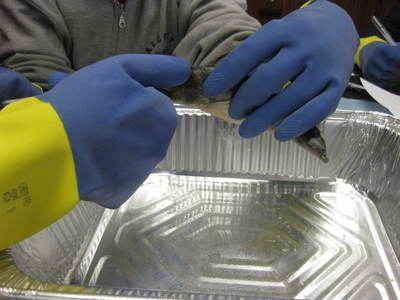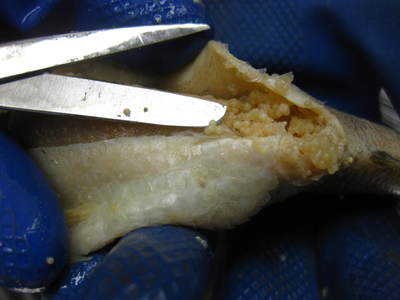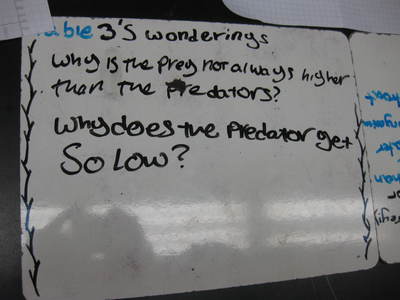We finally cleaned up our room and had a chance to really figure out what our dissections revealed to us. We're still trying to figure out the cause(s) behind the fluctuating trout population, and we feel that we've gotten a handle on things.
But some of the things we figured out about bony fish and the sea lamprey don't really hit home until we look at the evidence mathematically. Since sixth graders have studied ratios and proportions in math, it seemed like a great way to compare these two organisms!
Using research and evidence from the dissections, students created a mathematical model to represent various features of both the trout and the lamprey. From some of models, it seems like the lamprey totally had an advantage over the trout. In other models, the trout looks overpowering to the sea lamprey.
Which models best represent the results of an invasive species' effect on an organism in an ecosystem? You be the judge!
But some of the things we figured out about bony fish and the sea lamprey don't really hit home until we look at the evidence mathematically. Since sixth graders have studied ratios and proportions in math, it seemed like a great way to compare these two organisms!
Using research and evidence from the dissections, students created a mathematical model to represent various features of both the trout and the lamprey. From some of models, it seems like the lamprey totally had an advantage over the trout. In other models, the trout looks overpowering to the sea lamprey.
Which models best represent the results of an invasive species' effect on an organism in an ecosystem? You be the judge!






































































 RSS Feed
RSS Feed